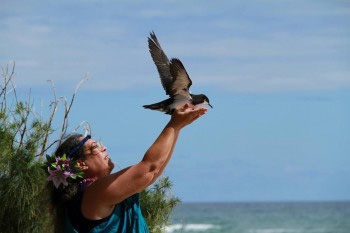Night-time light pollution causes difficulties to breeding shearwaters, petrels and storm petrels, notably fledglings, at many localities around the World. For examples, click here to access publications on light pollution affecting Cory’s Shearwaters Calonectris diomedea.
Kevin Gaston (Environment and Sustainability Institute, University of Exeter, UK) and colleagues reviewed the consequences of light pollution in the Journal of Animal Ecology in 2012.
The paper’s summary follows:
“Much concern has been expressed about the ecological consequences of night-time light pollution. This concern is most often focused on the encroachment of artificial light into previously unlit areas of the night-time environment, but changes in the spectral composition, duration and spatial pattern of light are also recognized as having ecological effects.
Here, we examine the potential consequences for organisms of five management options to reduce night-time light pollution. These are to (i) prevent areas from being artificially lit; (ii) limit the duration of lighting; (iii) reduce the ‘trespass’ of lighting into areas that are not intended to be lit (including the night sky); (iv) change the intensity of lighting; and (v) change the spectral composition of lighting.
Maintaining and increasing natural unlit areas is likely to be the most effective option for reducing the ecological effects of lighting. However, this will often conflict with other social and economic objectives. Decreasing the duration of lighting will reduce energy costs and carbon emissions, but is unlikely to alleviate many impacts on nocturnal and crepuscular animals, as peak times of demand for lighting frequently coincide with those in the activities of these species. Reducing the trespass of lighting will maintain heterogeneity even in otherwise well-lit areas, providing dark refuges that mobile animals can exploit. Decreasing the intensity of lighting will reduce energy consumption and limit both skyglow and the area impacted by high-intensity direct light. Shifts towards ‘whiter’ light are likely to increase the potential range of environmental impacts as light is emitted across a broader range of wavelengths.
Synthesis and applications. The artificial lightscape will change considerably over coming decades with the drive for more cost-effective low-carbon street lighting solutions and growth in the artificially lit area. Developing lighting strategies that minimize adverse ecological impacts while balancing the often conflicting requirements of light for human utility, comfort and safety, aesthetic concerns, energy consumption and carbon emission reduction constitute significant future challenges. However, as both lighting technology and understanding of its ecological effects develop, there is potential to identify adaptive solutions that resolve these conflicts.”

A fledgling Newell's Shearwater gets released after being downed by street lights in Hawaii
Photograph by Elizabeth Ames
Reference:
Gaston, K.J., Davies, T.W., Bennie, J. & Hopkins, J. 2012. Review: reducing the ecological consequences of night-time light pollution: options and developments. Journal of Animal Ecology 49: 1256-1266.
John Cooper, ACAP Information Officer, 09 July 2014

 English
English  Français
Français  Español
Español